Explore the serene Thieu Tri Tomb in Hue, Vietnam. Uncover the unique architectural features of Emperor Thieu Tri's final resting place, including its elegant pavilions and tranquil surroundings.
Learn about the tomb's historical significance and its role in preserving Vietnamese heritage.
List of Contents
1. Overview of Thieu Tri Tomb
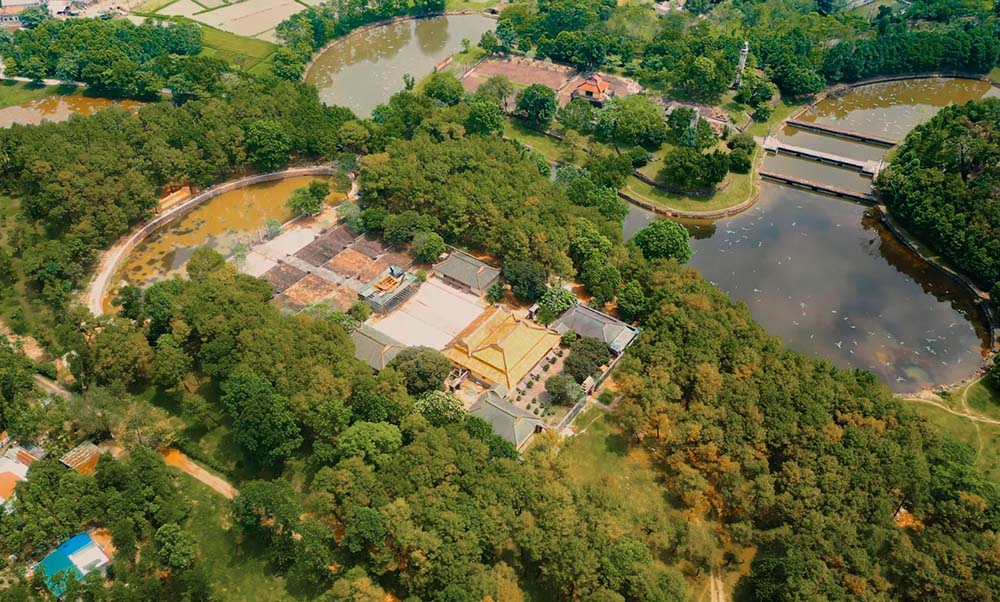
The Thieu Tri Tomb, a significant historical and architectural site, is nestled in Hue, Vietnam's ancient capital. This burial place of the Nguyen Dynasty's third king, Thieu Tri, was recognized as a UNESCO World Heritage Site in 1993.
Although it shares similarities with the tombs of King Gia Long and King Minh Mang, Thieu Tri's resting place boasts unique characteristics that make it stand out among Hue's ancient monuments.
2. History of Thieu Tri mausoleum

2.1. King Thieu Tri
King Thieu Tri, born Nguyen Phuc Mien Tong in 1807, was the eldest son of King Minh Mang. He ascended the throne in 1841 and, despite his brief reign, made significant contributions to Vietnamese history through cultural and educational reforms.
King Thieu Tri's untimely death in 1847 at the age of 41 cut his reign short, and his body was temporarily interred at Long An Temple within Bao Dinh Palace.
2.2. Construction of the Tomb
King Thieu Tri mandated a simple tomb construction at the foot of a mountain. After his passing, King Tu Duc took responsibility for building the tomb, choosing a site in Huong Thuy District near the Imperial City and naming it Thuan Dao Mountain.
Construction began in February 1848 under the supervision of mandarin Vu Van Giai and was completed swiftly by November of the same year. Despite the emperor's wish for simplicity, the tomb complex became an impressive construction featuring palaces, temples, lakes, and courtyards.
King Tu Duc personally oversaw the final stages, ensuring the mausoleum honored his father's legacy. Skilled artisans and laborers worked tirelessly to complete the tomb within ten months.
3. Location and Accessibility

Thieu Tri Tomb lies in the tranquil Cu Chanh Village, Thuy Bang Commune, Huong Thuy District, Thua Thien-Hue. The imperial resting place is just 8 kilometers south of Hue's bustling city center.
3.1. Opening Hours and Entrance Fees
The historic site welcomes visitors daily from 7:00 AM to 5:00 PM. Admission is 50,000 VND for adults, while children under 12 enter free.
3.2. Dress Code and Visiting Tips
Respectful attire is a must at this cultural heritage site. No shorts, sleeveless shirts, or revealing clothing. Wear comfortable shoes for walking. Visit from January to April to avoid heat and rain.
4. How to Get to Thieu Tri Tomb
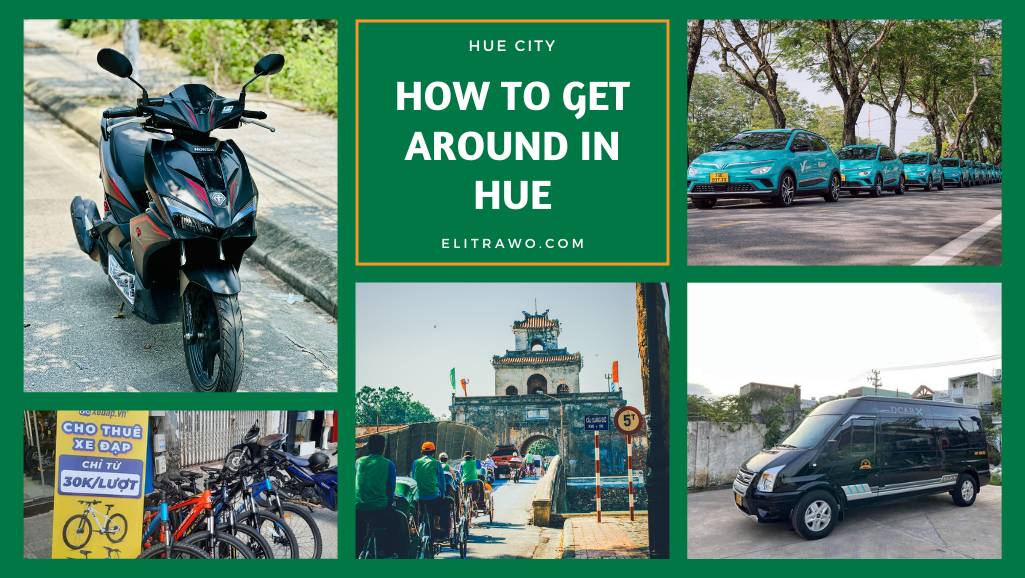
4.1. Directions and Transportation Options
From Hue city center to the emperor's tomb:
- Head straight on Dien Bien Phu Road to Nam Giao Esplanade.
- Turn left onto Minh Mang Road.
- At Hong Duc Pagoda intersection, turn right.
- After 2 km, look for Thieu Tri Tomb signs on the left.
4.2. Transportation Modes
By Bicycle: Rent a bike in Hue for a scenic, eco-friendly 30-45 minute ride to the royal mausoleum.
By Taxi or Motorbike: Taxis and motorbikes abound in Hue. Reach the imperial tomb in about 15 minutes.
Booking a Hue City Private Tour: Guided tours offer transport, information, and visits to other historic Hue attractions for a comprehensive experience.
Read more: How to Get Around in Hue
5. Architectural Features
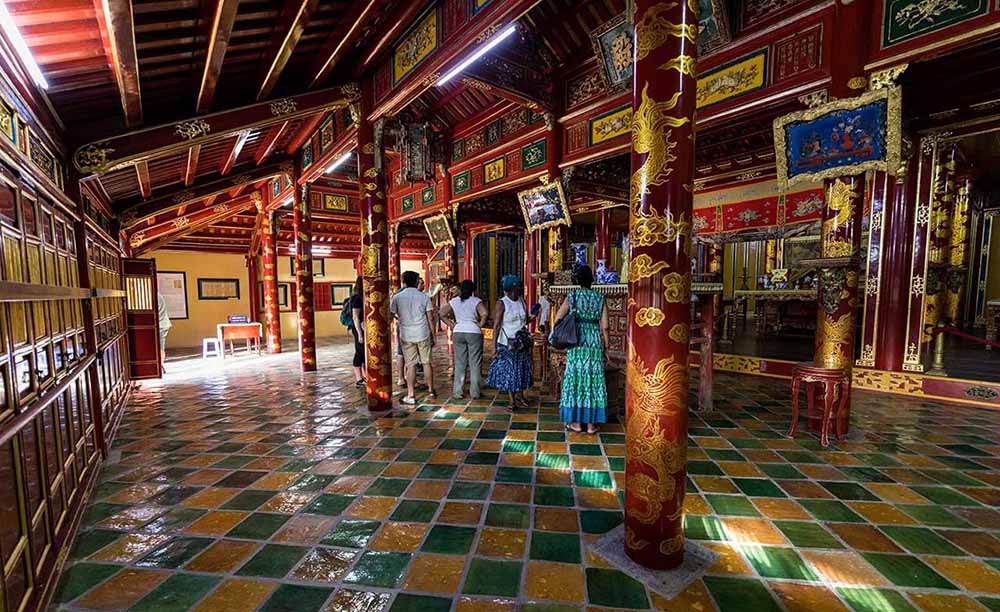
5.1. General Layout
Thieu Tri Tomb blends elements from Gia Long Tomb and Minh Mang Tomb. It uniquely lacks La Thanh, the outer wall, instead incorporating the natural landscape into its design.
This preserves the site's beauty and integrates it into the tomb's aesthetic.
5.2. Worshiping Area
The worshiping area begins with the crescent-shaped Dien Lake, a common feature in Nguyen Dynasty royal tombs. A three-door gate marks the main entrance, opening to a spacious yard.
Bieu Duc Temple lies at the heart, adorned with intricate decorations, including 450 relief-carved ancient poems and dragon motifs. Inside, the ancestral tablets of King Thieu Tri and Queen Tu Du are enshrined.
5.3. Tomb Area
The tomb area starts with Nhuan Trach Lake, connecting to Dien Lake, creating a harmonious water landscape. The bronze Nghi Mon gate, featuring dragon motifs, leads to Bai Dinh yard, flanked by statues of mandarins, horses, and elephants.
The Bi Dinh pavilion houses the Thanh Duc Than Cong stele, an epitaph inscribed with over 2,500 characters written by King Tu Duc for his father. The circular Buu Thanh enclosure holds King Thieu Tri's grave, nestled within a peaceful, green hill.
6. Unique Features
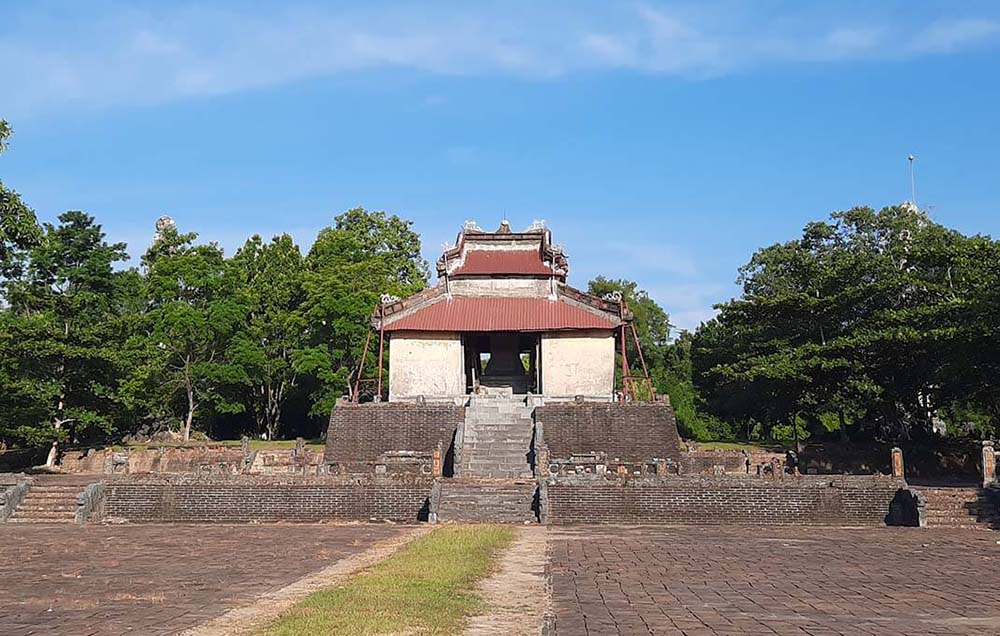
6.1. Natural Integration
Thieu Tri Tomb integrates with the natural environment, utilizing surrounding mountains and artificial mounds as defenses and aesthetic enhancements. The rural scenery, with verdant trees and rice fields, adds to its serene ambiance.
6.2. Feng Shui and Direction
The tomb's unique northwest orientation sets it apart from other Hue royal tombs. This direction was chosen based on Feng Shui principles.
Vong Canh Hill and Ngoc Tran Mountain, about 1 kilometer away, serve as symbolic guardians, representing the “left Dragon, right Tiger” configuration, enhancing the tomb's majestic setting.
7. Visitor Experience
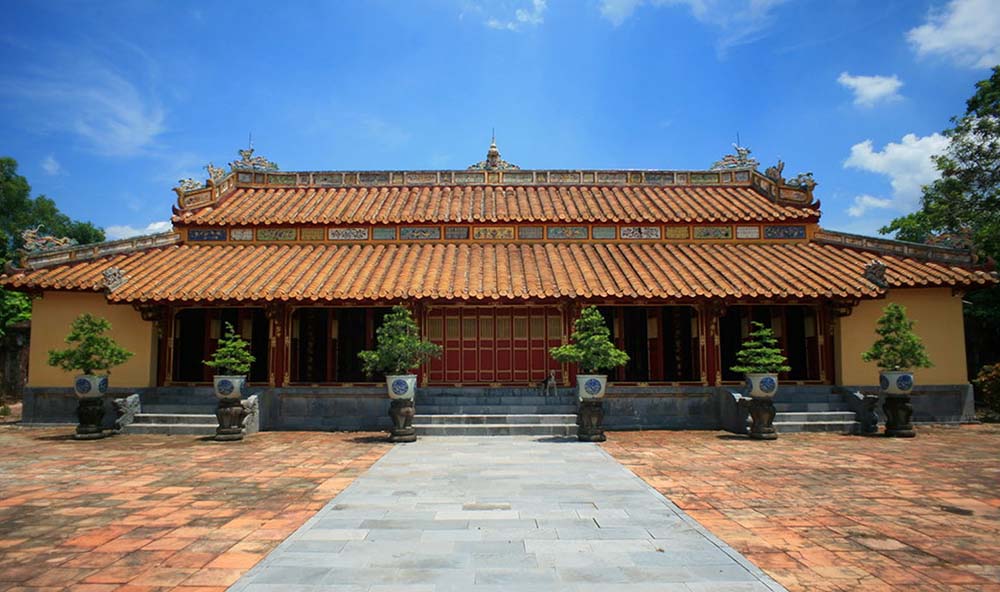
7.1. Key Attractions
Thieu Tri Tomb offers visitors a rich tapestry of history, architecture, and natural beauty. Key attractions within the tomb complex include:
- Bieu Duc Temple: This temple houses the ancestral tablets of King Thieu Tri and Queen Tu Du. Visitors are captivated by its double-roof architecture, intricate dragon motifs, and beautifully carved ancient poems.
- Bai Dinh Yard: Flanked by statues of mandarins, horses, and elephants, this grand courtyard offers a glimpse into royal ceremonies of the past. The Bi Dinh pavilion with its significant Thanh Duc Than Cong stele makes it a must-see.
- Buu Thanh: The circular enclosure houses King Thieu Tri's grave. This serene area, surrounded by lush greenery, invites reflection and appreciation of the historical legacy.
Don't miss the Nhuan Trach Lake with its waterways, the bronze Nghi Mon gate with exquisite craftsmanship, and the tranquil flower gardens.
7.2. Practical Information
- Best Times to Visit: January to April, when weather is mild and conducive to outdoor activities.
- Expected Duration: Allow 2 to 3 hours to fully explore the tomb complex and appreciate its details.
- Tips for a Pleasant and Respectful Visit:
- Dress modestly and respectfully.
- Wear comfortable footwear.
- Bring water and sun protection during warmer months.
- Respect the site by not touching artifacts or stepping on restricted areas.
- Photography allowed, but refrain from flash in sensitive areas.
8. Conclusion
Thieu Tri Tomb testifies to the architectural ingenuity and cultural richness of the Nguyen Dynasty. Its harmonious blend of natural landscapes and historical structures offers a unique glimpse into Vietnam's regal past.
Exploring Thieu Tri Tomb provides a deeper understanding of the nation's history and a serene retreat into the beauty of its heritage. Whether you are a history enthusiast, an architecture aficionado, or simply seeking a peaceful escape, this imperial tomb promises a memorable and enriching experience.
Your adventure in Hue is just beginning. For a comprehensive guide to the city's best attractions, accommodations, and dining options, check out our detailed Hue Travel Guide.
Don't miss our curated list of Things to Do in Hue, featuring must-see historical sites, cultural experiences, and local activities. Dive deeper into Hue's rich heritage and vibrant culture today!




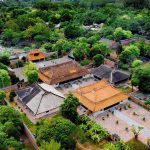


I haven’t checked in here for a while as I thought it was getting boring, but the last several posts are great quality so I guess I will add you back to my everyday bloglist. You deserve it my friend 🙂